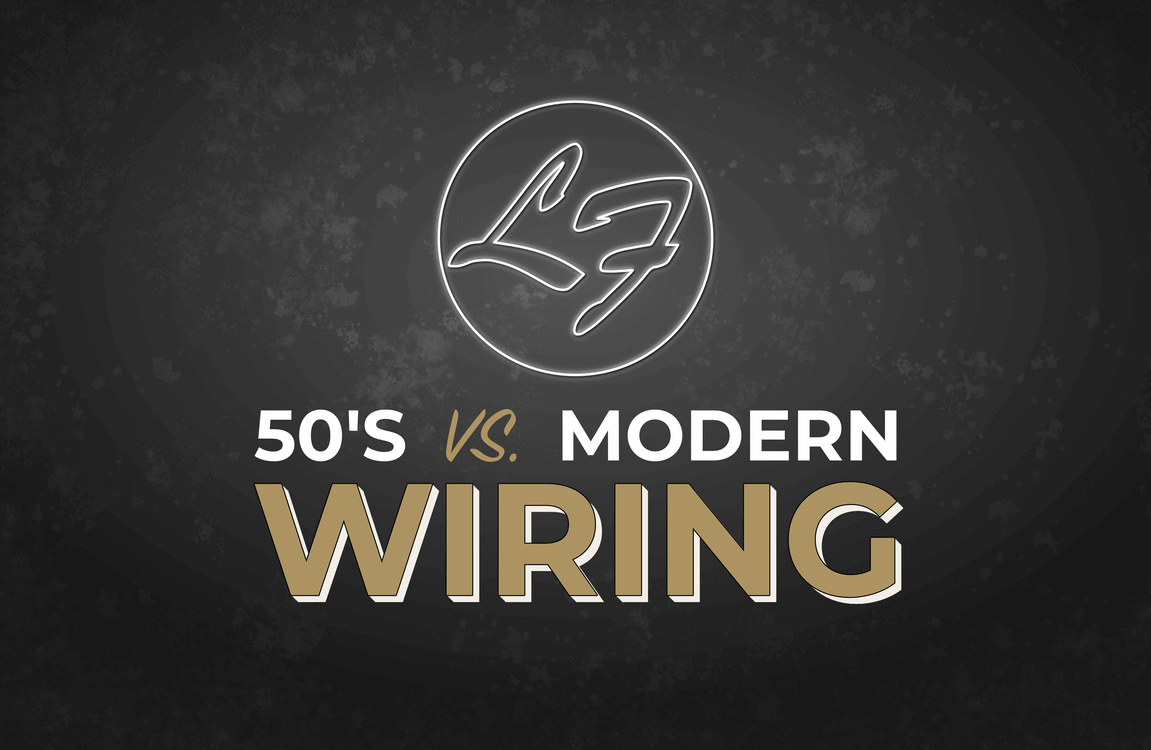
What’s The Difference Between ’50s Wiring and Modern Wiring?
This is a very high-level overview of this topic. Different Tone Caps, Pickups, body woods, playing styles, etc. will all affect the outcome of your tone.
’50s Wiring vs. Modern Wiring – What Gives?
If you have a Les Paul® or Telecaster Deluxe, chances are you have run into this thing called “’50s Wiring“. What is it? Is Modern Wiring better? (spoiler alert: Not necessarily)
Gibson 50’s wiring only refers to how the tone cap is wired into the guitar.
’50s Wiring applies to any guitar with two pickups, each with their own respective Volume Pot and Tone Pot. It involves how the tone cap is wired into the guitar. There are many ways to wire a Tone Cap, but, without getting too technical, the way the tone cap connects between your pots actually changes how your Volume Pots and Tone Pots interact with each other. There are subtle differences between the two that might actually suit your playing style better. Let’s explain the difference between 50’s Wiring and Modern Wiring:
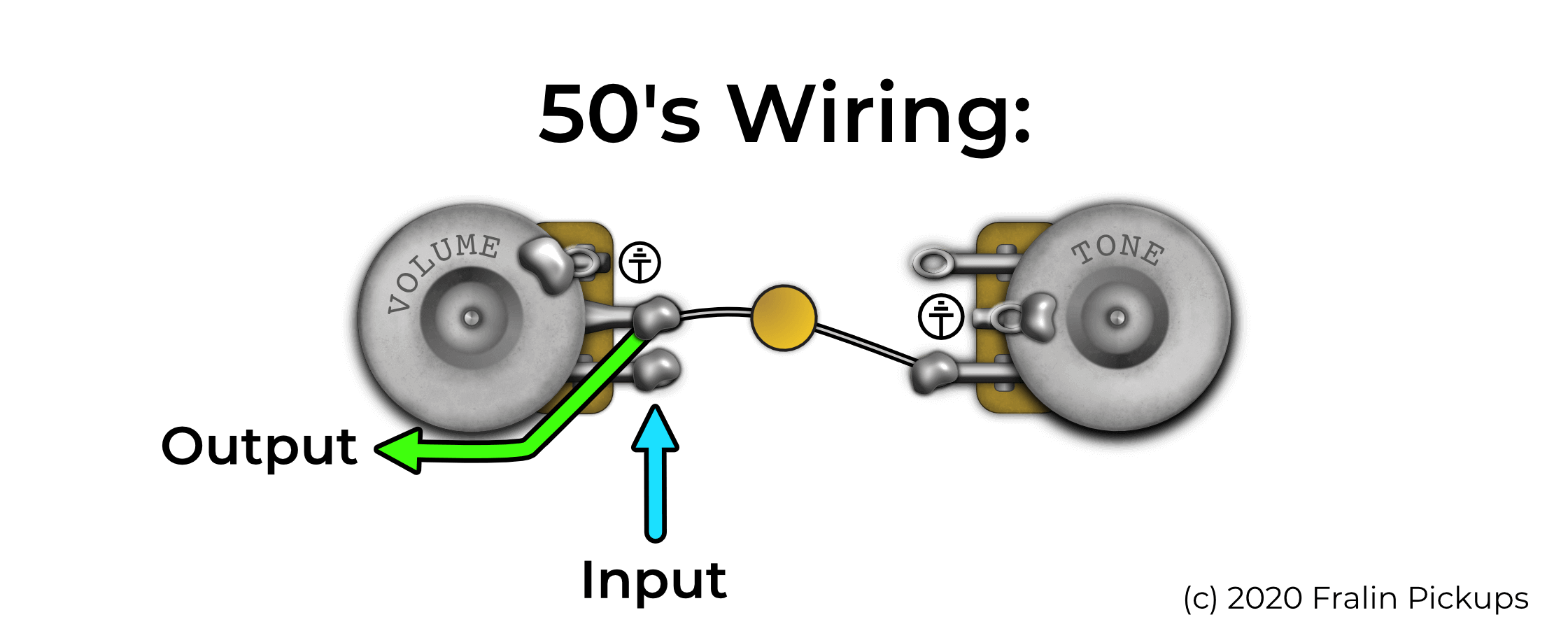
With ’50s Wiring, the tone cap connects to the middle lug of the Volume Pot, and Lug 3 of the Tone Pot.
Pros of ’50s Wiring:
- The pickup tone stays consistent when turning down the Volume Pot.
- Pickups don’t lose high frequencies when turning down the Volume Pot.
- High frequencies tend to stay clear with the Volume Pot in it’s lower ranges.
Cons:
- Turning down the tone pot can affect the pickup’s volume.
- Some high-gain situations can yield an overly bright tone.
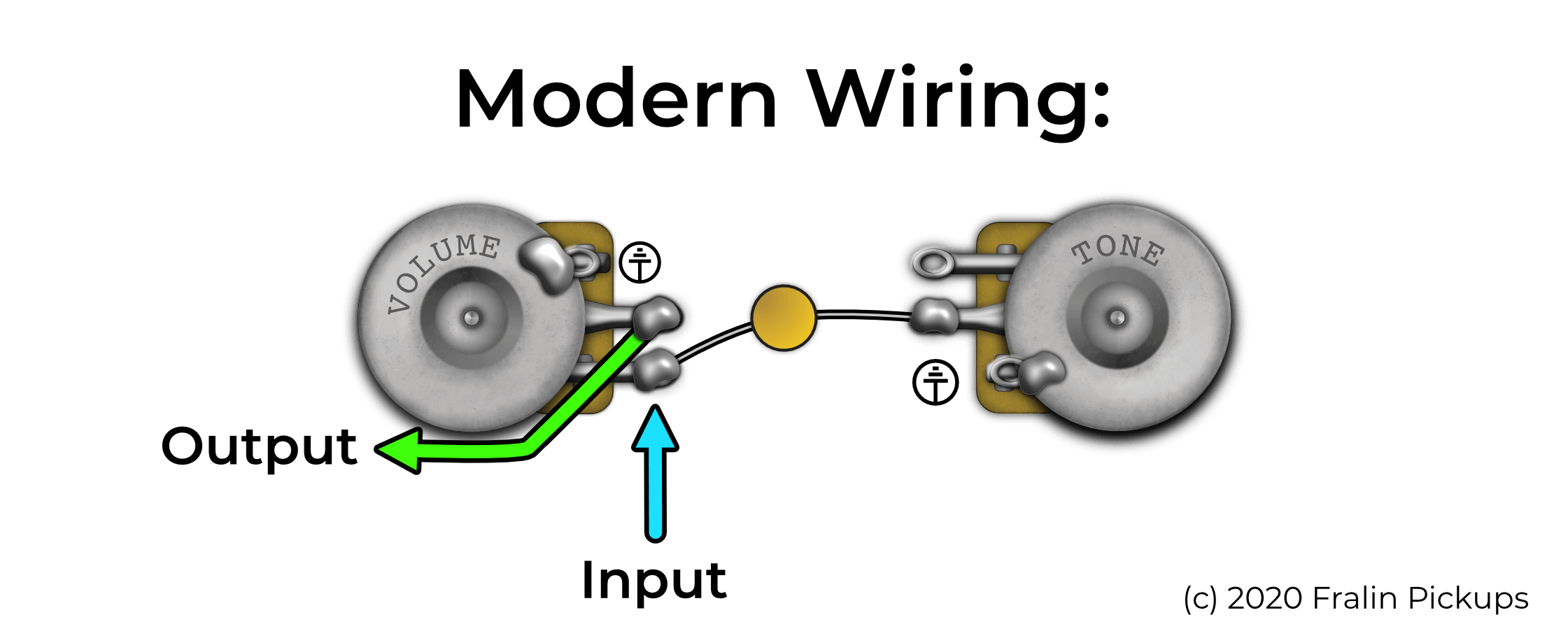
With Modern Wiring, the Tone Cap connects to the Input Lug of the Volume Pot.
Pros of Modern Wiring:
- The Tone Pot will not affect your pickup’s volume.
- A smoother tone in general, which some players like.
Cons:
- Turning down the Volume Pot will send some high frequencies to ground, darkening your tone.
Which Wiring Is Better For Me?
It depends! As listed above, you can tell that there are subtle trade-offs between the two wiring schemes. If you have a dark-sounding guitar, you might like the 50’s Wiring. If you play a softer-style of music, you might like the rolled off high frequencies provided by the Modern Wiring.
With such an easy modification to make, we urge you to experiment. See what works best for you, your guitar, and your playing style!
Want more posts like this?
Subscribe for tone tips, tricks, and more.

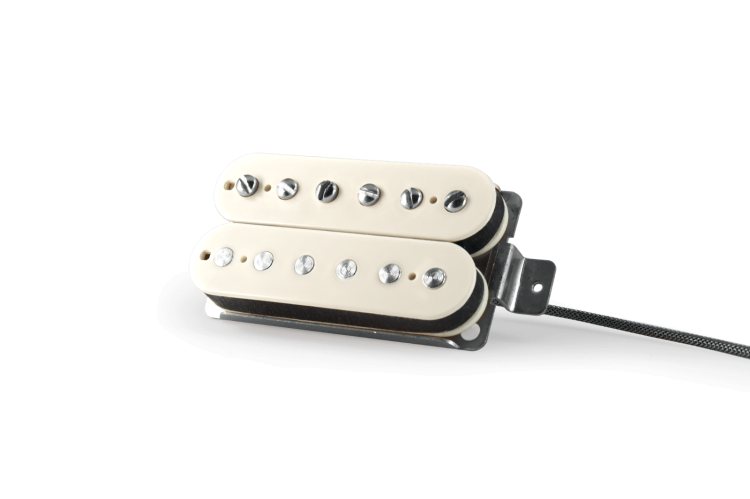
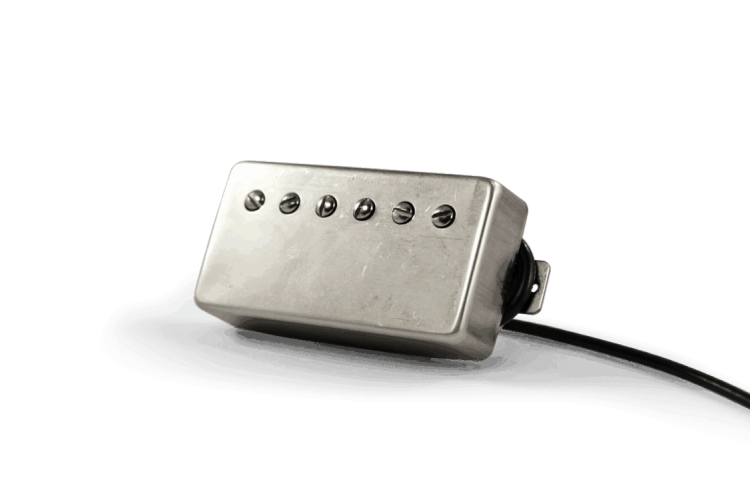

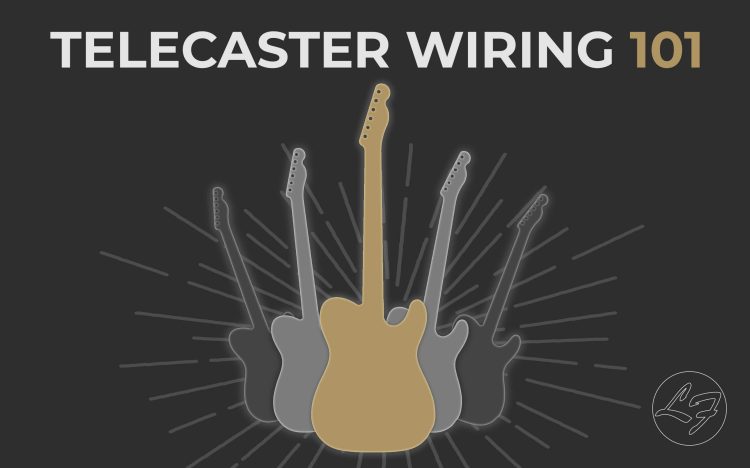
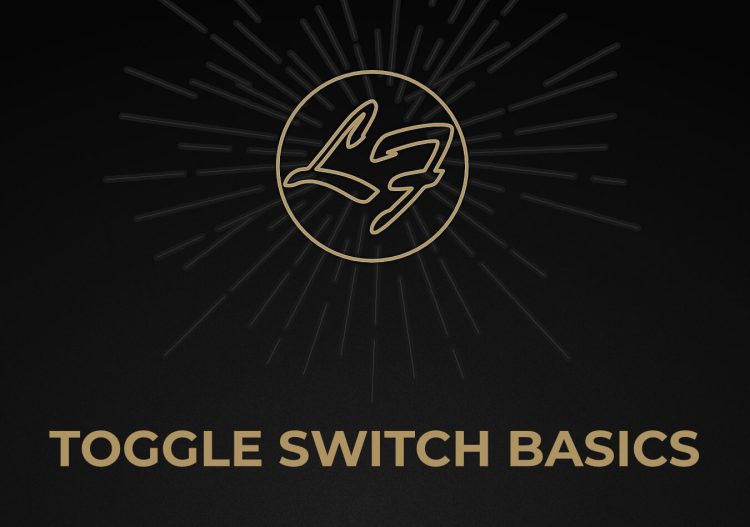
Looking at the pictures and pondering why did you switch tone pot lugs between the images? Is it to illustrate that it doesn’t matter which of the two you use as long as the other lug is grounded (because resistance does not have direction)? Just ensure the resistance between those lugs grows along with the tone knob value.
“’50s Wiring applies to any guitar with two pickups”
Well either style can be used in a guitar with a single pickup as well.
When you have two pickups, the wiring can get a little more complicated with a switch and more variable resistors (pots) and capacitors. Of course if you really want passive tone control at the guitar, switch out the single capacitors to a variable (or selectable) capacitor with its own rotating knob like the Gibson .
Thank you for your insight. The article was very intriguing. I’ve been playing guitar for 52 years and I too love tinkering on things. Recently bought an SG Standard and it’s very impressive. Nevertheless it has CTS electronics and said it had era-approptiate wiring. I kind of knew what that meant. Nevertheless thank you again for your article. Rock-on
Oops! I just rechecked, I have modern wiring (signal coming from input side of pot through resistor to tone control) but with an 0.001mF cap between input side and wiper. I think this was a mod done to not lose the highs with volume turning down, and it seemed to work. Is this a variation?
I am not sure from where but my Les Paul sounds great, but has 50’s wiring BUT ALSO a .001mF cap between volume wiper and input. .??
Thank you for the interesting article. I wish people would actually provide the schematics of the circuits involved and not simply the ‘dumbed-down’ wiring diagrams. It’s much easier to analyze a circuit with a schematic than with a drawing of the components.
Can you use 50s-style wiring on guitars with two HB pickups but one tone and one volume control?
Yes, you can!
I switch all my Les Pauls to ‘50s wiring it really brightens up the overall sound of humbuckers
Man I have been loosing my mind trying to find the right pickup for one of my Telecasters .I would put pickups that I knew sounded great in it and nope not it. I just ran across this article on your website . So I flipped the control plate over and looked and sure as sh** it is in the 50’s wiring. If this works I will be one happy man. THANK YOU!!!
I thought I’d made up my mind to go with ” ’50s Les Paul wiring for Telecaster” (1 Vol, 1 Tone, 2 LF Blues Special Tele pickups); but now… Maybe I should do “Modern” with a Cap & Resistor Treble-Bleed… man, I’m practically agonizing over this… ! I use my guitars volume-controls A LOT, along with my fingerstyle “touch”, for gain/clean-up/overdrive adjustments going from clean to mean to scream (and, with the help of, say, my Foxrox Octron, to “Beam me up, Scotty!”)…
The simple answer to this is to have two guitars of each kind, one of each two wired for each of the two wiring schemes. Like we say out here in the West when someone asks “How many guitars do you need?”. The answer is ALWAYS, just one more.
Thanks! what about a modern wiring with treble bleed on the volume pot? that is the best approach imo. any thought?
Hey Dario,
Sure! That will work just fine. That said, the Volume Kit (Treble Bleed) does make the entire guitar a touch brighter.
I am shopping for a P90 with published resistance values in ohms. Gibson P90s are 9ohms, others are 8 or less. Is your P90 9ohms? What are your values for the over and under wound versions you offer as well? Thanks!
Hey Tim, our Stock P90 Set reads 7.2K on the Neck and the 8.2K on the Bridge. All resistance readings are located under the “Tech Specs” part of each product.
my tone pot on my Gibson Johnny Smith only woks for the last 10% and gets dark really fast. Is there a way to make the tone pot more gradual and even?
Hey Jake,
It sounds like you have a Linear Pot as your tone pot. I would recommend changing to an Audio Taper pot as the effect is more gradual than a Linear Pot. I hope that helps!
Could you fix the page layout of “The Workbench”? I can’t go back and see the old articles. Thanks in advance!
Fixed! It was a bug that we squished today.
Although correct that you will experience a loss of treble with modern wiring when turning the volume pot down (or using very long patch cables from the guitar to the pedal/amp), there are ways to combat this. One way is to attach a ~150k resistor and 1nF capacitor in parallel between the input lug and hot output to the jack of the volume pot. This works fine for single coil guitars like a Strat or a Tele.
Easily explained, without being a technician I got the difference between 50 and modern wiring.
Keep going on
Hi! I really like the article, and found it very educating. It explains a lot regardig how this simple modification can provide options for someone not liking how their current wiring. I personally went with ’60s wiring and would like to read in depth analisys of that kind of wiring. It is also simple to do and it has is’s own benefits…
Kind regards,
Josip
Tyler, thanks for the article on 50s wiring vs modern wiring! Is there any difference between them when backing off the volume to clean up the signal from a gain pedal (overdrive, fuzz, or distortion pedal)? If I understood your article correctly, the 50s wiring behaves as what’s now called, a treble bleed circuit.
Thanks again!
John